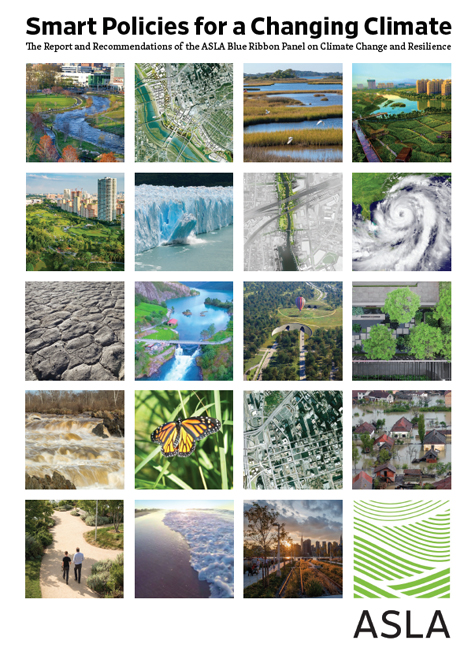Professional Practice
Climate Change Mitigation: Landscape Materials and Construction
Download Report:
While landscape architects create designs and plans that help communities reduce their greenhouse gas (GHG) emissions, the construction of those designs can be a source of significant emissions in their own right. This is in large part due to the energy required to manufacture common building materials: the cement industry is responsible for 5 percent of total global carbon dioxide emissions, while iron and steel production is responsible for 6-7 percent.
According to one estimate, the use of these and other carbon-intensive building materials can generate an average of 1,100 tons of carbon dioxide per year per landscape architect.
Landscape architects are using their designs to shift the building industry to more sustainable, low-carbon materials and practices. For example, for their redesign of Chicago’s Navy Pier, landscape architecture firm James Corner Field Operations worked with paving company Unilock to create a custom paving stone made of 30 percent recycled copper slag, which became part of Unilock’s product lineup.
In another example, Michael Van Valkenburgh and Associates are working to create a United States market for black locust, a fast growing, durable hardwood that is a sustainable (and more affordable) alternative to threatened tropical hardwoods such as Ipe.
In addition to materials, there are other source of emissions from the construction process: the transportation of materials and labor to the worksite, emissions generated by machinery during the construction process, and energy required to operate and maintain the landscape after construction is completed.
For these reasons, the American Society of Landscape Architects partnered with the United States Botanic Garden and The Ladybird Johnson Wildflower Center to create the Sustainable Sites Initiative (SITES), a rating system that seeks to define, measure, and promote sustainable landscape design and construction.
The SITES rating system contains a range of strategies and recommendations, many of which will result in an overall reduction of GHG emissions. Strategies include:
- Using recycled, salvaged, or sustainably manufactured and procured materials
- Using regionally sourced materials with shorter supply chains
- Designing for re-use and disassembly
- Using renewable sources for energy needs
- Reducing outdoor energy consumption, especially through the use of energy efficient lighting such as LEDs
Implementing carbon accounting and following the basic principles of SITES can help minimize emissions wherever possible
There are also emerging technologies that offer potential not only to reduce emissions, but even store carbon in the built environment:
Organizations
Architecture 2030
U.S. Green Building Council
Sustainable Sites Initiative (SITES)
Resources
Bigger Climate Action Emerging in Cement Industry, UNFCCC
Concrete Minus Carbon, Meg Calkins, FASLA for Landscape Architecture Magazine, June 2017
Designing our Future: Sustainable Landscapes, American Society of Landscape Architects
Landscape Architects Must Use Market Power to Push for Sustainable Materials, The Dirt blog, June 15, 2010
Material Strategies for Sustainable Construction, Blaine Brownell for Architect Magazine, October 4, 2017
The Materials Industry Is Pitching In to Reduce Greenhouse Gas Emissions, Blaine Brownell for Architect Magazine, December 14, 2017
Mazria: We Must Design Out Carbon Emissions, The Dirt blog, November 27, 2013
SITES v2 Rating System and Scorecard
ASLA Design Guide for Sustainable Residential Design: Using Low-Impact Materials, American Society of Landscape Architects
Research
Carbon, Fossil Fuel, and Biodiversity Mitigation with Wood and Forests, Chadwick Dearing Oliver et al, Journal of Sustainable Forestry, 2014
Future Materials Here Today: Self-Healing Concrete, Biological Bricks, and More, The Dirt blog, April 7, 2017
Projects
200 5th Avenue, New York City, New York
Landworks Studio, Inc.
Le Petit Chalet, Southwest Harbor, ME
Cunningham Landscape Design LLC
At the Hudson's Edge: Beacon's Long Dock a Resilient Waterfront Park, Beacon, NY
Reed Hilderbrand LLC
The Rivermark, Sacramento, CA
Fletcher Studio
Shoemaker Green, Philadelphia, PA
Andropogon Associates Ltd.
West Texas Ranch, Marfa, Texas
Ten Eyck Landscape Architects
Bartholdi Park at the U.S. Botanic Garden, Washington, D.C.
Andropogon Associates Ltd.